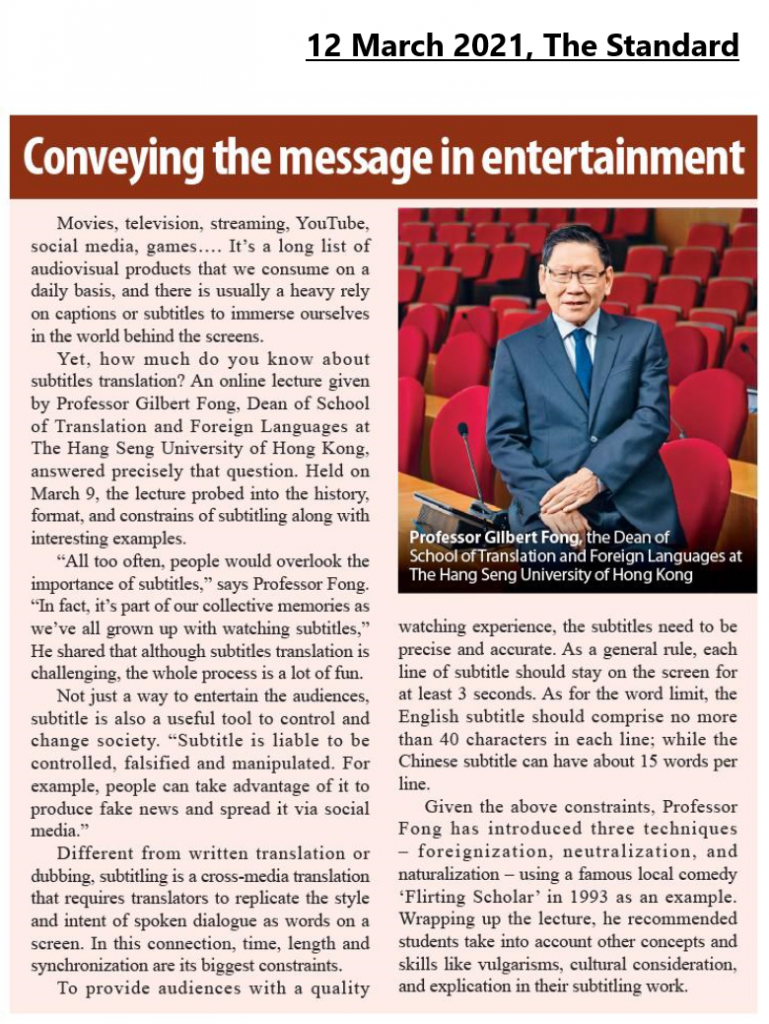гҖҠиӢұж–ҮиҷҺе ұгҖӢе ұе°Һ
(in English only)
12 March 2021
(This article was published on The Standard on 12 March 2021.)
Conveying the message in entertainment
Movies, television, streaming, YouTube, social media, gamesвҖҰ. ItвҖҷs a long list of audiovisual products that we consume on a daily basis, and there is usually a heavy rely on captions or subtitles to immerse ourselves in the world behind the screens.
Yet, how much do you know about subtitles translation? An onlineВ lecture given by Professor Gilbert Fong, Dean of School of Translation and Foreign Languages at The Hang Seng University of Hong Kong, answered precisely thatВ question. Held on March 9, the lecture probed into the history, format, and constrains of subtitling along with interesting examples.
вҖңAll too often, people would overlook the importance of subtitles,вҖқ says Professor Fong. вҖңIn fact, itвҖҷs part of our collective memories as weвҖҷve all grown up with watching subtitles,вҖқ He shared that although subtitles translation is challenging, the whole process is a lot of fun.
Not just a way to entertain the audiences, subtitle is also a useful tool to control and change society. вҖңSubtitle is liable to be controlled, falsified and manipulated. For example, people can take advantage of it to produce fake news and spread it via social media.вҖқ
Different from written translation or dubbing, subtitling is a cross-media translation that requires translators to replicate the style and intent of spoken dialogue as words on a screen. In this connection, time, length and synchronization are its biggest constraints.
To provide audiences with a quality watching experience, the subtitles need to be precise and accurate. As a general rule, each line of subtitle should stay on the screen for at least 3 seconds. As for the word limit, the English subtitle should comprise no more than 40 characters in each line; while the Chinese subtitle can have about 15 words per line.
Given the above constraints, Professor Fong has introduced three techniques вҖ“ foreignization, neutralization, and naturalization вҖ“ using a famous local comedy вҖҳFlirting ScholarвҖҷ in 1993 as an example. Wrapping up the lecture, he recommended students take into account other concepts and skills like vulgarisms, cultural consideration, and explication in their subtitling work.




